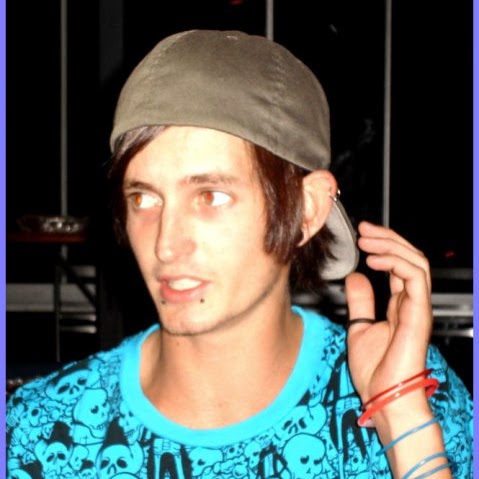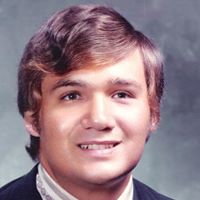Thomas Edward Meek
Deceased
from Saltillo, MS
- Also known as:
-
- Thomas E Meek
- Thomas Edward Meel
- Edward Meel Thomas
Thomas Meek Phones & Addresses
- Saltillo, MS
- 3917 Roberts Rd, Corryton, TN 37721 • 8656873304
Resumes

Computer & Network Security Professional
view sourceLocation:
United States
Industry:
Computer & Network Security

Thomas N Tom Meek
view source
Thomas Meek
view source
Thomas Meek
view sourceWork:
Shell Globl Solutions Jul 2003 - Jul 2016
Delayed Coking Technologist - Distillation and Thermal Conversion
Delayed Coking Technologist - Distillation and Thermal Conversion

Thomas Meek
view source
Thomas N Tom Meek
view source
Thomas Meek
view source
Thomas Meek
view sourceSkills:
Research
Management
Microsoft Excel
Leadership
Microsoft Word
Microsoft Office
Process Improvement
Strategic Planning
Strategy
Team Leadership
Project Management
Management
Microsoft Excel
Leadership
Microsoft Word
Microsoft Office
Process Improvement
Strategic Planning
Strategy
Team Leadership
Project Management
Medicine Doctors

Thomas E. Meek
view sourceSpecialties:
Family Medicine
Work:
Blue Ridge Family Practice
730 Malcom Blvd, Rutherford College, NC 28671
8288798684 (phone), 8285808459 (fax)
730 Malcom Blvd, Rutherford College, NC 28671
8288798684 (phone), 8285808459 (fax)
Education:
Medical School
Ohio University College of Osteopathic Medicine
Graduated: 2002
Ohio University College of Osteopathic Medicine
Graduated: 2002
Procedures:
Arthrocentesis
Destruction of Benign/Premalignant Skin Lesions
Electrocardiogram (EKG or ECG)
Osteopathic Manipulative Treatment
Pulmonary Function Tests
Skin Tags Removal
Vaccine Administration
Destruction of Benign/Premalignant Skin Lesions
Electrocardiogram (EKG or ECG)
Osteopathic Manipulative Treatment
Pulmonary Function Tests
Skin Tags Removal
Vaccine Administration
Conditions:
Disorders of Lipoid Metabolism
Hypothyroidism
Skin and Subcutaneous Infections
Substance Abuse and/or Dependency
Vitamin D Deficiency
Hypothyroidism
Skin and Subcutaneous Infections
Substance Abuse and/or Dependency
Vitamin D Deficiency
Languages:
English
Spanish
Spanish
Description:
Dr. Meek graduated from the Ohio University College of Osteopathic Medicine in 2002. He works in Rutherford College, NC and specializes in Family Medicine. Dr. Meek is affiliated with Blue Ridge Regional Hospital.

Thomas D. Meek
view sourceSpecialties:
Surgery , Neurological
Work:
Thomas D Meek MD
80 Prestwick, Odessa, TX 79762
4323675797 (phone), 4326876298 (fax)
80 Prestwick, Odessa, TX 79762
4323675797 (phone), 4326876298 (fax)
Education:
Medical School
Ohio State University College of Medicine
Graduated: 1961
Ohio State University College of Medicine
Graduated: 1961
Conditions:
Intervertebral Disc Degeneration
Languages:
English
Description:
Dr. Meek graduated from the Ohio State University College of Medicine in 1961. He works in Odessa, TX and specializes in Surgery , Neurological. Dr. Meek is affiliated with Medical Center Hospital and Odessa Regional Medical Center.

Thomas Dale Meek
view sourceSpecialties:
Neurological Surgery
Education:
The Ohio State University(1961)
Us Patents
-
Carbon Fiber Manufacturing Via Plasma Technology
view source -
US Patent:6372192, Apr 16, 2002
-
Filed:Jan 28, 2000
-
Appl. No.:09/493474
-
Inventors:Felix L. Paulauskas - Knoxville TN
Kenneth D. Yarborough - Oak Ridge TN
Thomas T. Meek - Knoxville TN -
Assignee:UT-Battelle, Inc. - Oak Ridge TN
-
International Classification:D01F 912
-
US Classification:4234477, 4234471, 204155
-
Abstract:The disclosed invention introduces a novel method of manufacturing carbon and/or graphite fibers that avoids the high costs associated with conventional carbonization processes. The method of the present invention avoids these costs by utilizing plasma technology in connection with electromagnetic radiation to produce carbon and/or graphite fibers from fully or partially stabilized carbon fiber precursors. In general, the stabilized or partially stabilized carbon fiber precursors are placed under slight tension, in an oxygen-free atmosphere, and carbonized using a plasma and electromagnetic radiation having a power input which is increased as the fibers become more carbonized and progress towards a final carbon or graphite product. In an additional step, the final carbon or graphite product may be surface treated with an oxygen-plasma treatment to enhance adhesion to matrix materials.
-
Diagnostic Monitor For Carbon Fiber Processing
view source -
US Patent:6375875, Apr 23, 2002
-
Filed:Jan 27, 2000
-
Appl. No.:09/492473
-
Inventors:Felix L. Paulauskas - Knoxville TN
Timothy S. Bigelow - Knoxville TN
Thomas T. Meek - Knoxville TN -
Assignee:UT-Battelle, LLC - Oak Ridge TN
-
International Classification:B29C 4712
-
US Classification:264 292, 264 297, 264406, 324636, 324637, 324639, 4234471, 423448, 425 722, 425135, 4253782, 4253822, 425404, 425464
-
Abstract:A method for monitoring characteristics of materials includes placing a material in an application zone, measuring a change in at least one property value of the application zone caused by placing the material in the application zone and relating changes in the property value of the application zone caused by the material to at least one characteristic of the material An apparatus for monitoring characteristics of a material includes a measuring device for measuring a property value resulting from applying a frequency signal to the application zone after placing a material in the application zone and a processor for relating changes in the property value caused by placement of the material in the application zone to at least one desired characteristic of the material. The application zone is preferably a resonant cavity.
-
Fabricating Electronic Devices Using Actinide Oxide Semiconductor Materials
view source -
US Patent:6730538, May 4, 2004
-
Filed:Jun 22, 2000
-
Appl. No.:09/599341
-
Inventors:Thomas T. Meek - Knoxville TN
Michael Z. Hu - Knoxville TN -
Assignee:The University of Tennessee Research Corporation - Knoxville TN
-
International Classification:H01L 2100
-
US Classification:438104, 438 3, 438240, 438778, 438782, 438785, 438758
-
Abstract:A method for fabricating electronic devices. First, an actinide oxide semiconductor material is provided. Next, an electronic device is fabricated using the actinide oxide semiconductor material.
-
Method And Apparatus For Semi-Solid Material Processing
view source -
US Patent:7216690, May 15, 2007
-
Filed:Jun 17, 2004
-
Appl. No.:10/871180
-
Inventors:Qingyou Han - Knoxville TN, US
Xiaogang Jian - Knoxville TN, US
Hanbing Xu - Knoxville TN, US
Thomas T. Meek - Knoxville TN, US -
Assignee:UT-Battelle LLC - Oak Ridge TN
-
International Classification:B22D 17/10
B22D 23/00
B22D 25/00
B22D 27/08 -
US Classification:164113, 164 711, 164312, 164900
-
Abstract:A method of forming a material includes the steps of: vibrating a molten material at an ultrasonic frequency while cooling the material to a semi-solid state to form non-dendritic grains therein; forming the semi-solid material into a desired shape; and cooling the material to a solid state. The method makes semi-solid castings directly from molten materials (usually a metal), produces grain size usually in the range of smaller than 50 μm, and can be easily retrofitted into existing conventional forming machine.
-
Method And Apparatus For Semi-Solid Material Processing
view source -
US Patent:7493934, Feb 24, 2009
-
Filed:Mar 29, 2007
-
Appl. No.:11/729614
-
Inventors:Qingyou Han - Knoxville TN, US
Xiaogang Jian - Knoxville TN, US
Hanbing Xu - Knoxville TN, US
Thomas T. Meek - Knoxville TN, US -
Assignee:UT-Battelle, LLC - Oak Ridge TN
-
International Classification:B22D 17/10
B22D 23/00
B22D 25/00
B22D 27/08 -
US Classification:164113, 164 711, 164312, 164900
-
Abstract:A method of forming a material includes the steps of: vibrating a molten material at an ultrasonic frequency while cooling the material to a semi-solid state to form non-dendritic grains therein; forming the semi-solid material into a desired shape; and cooling the material to a solid state. The method makes semi-solid castings directly from molten materials (usually a metal), produces grain size usually in the range of smaller than 50 μm, and can be easily retrofitted into existing conventional forming machine.
-
Method And Apparatus For Semi-Solid Material Processing
view source -
US Patent:7621315, Nov 24, 2009
-
Filed:Jan 22, 2009
-
Appl. No.:12/357857
-
Inventors:Qingyou Han - Knoxville TN, US
Xiaogang Jian - Knoxville TN, US
Hanbing Xu - Knoxville TN, US
Thomas T. Meek - Knoxville TN, US -
Assignee:UT-Battelle, LLC - Oak Ridged TN
University of Tennessee Research Foundation - Knoxville TN -
International Classification:B22D 17/10
B22D 23/00
B22D 25/00
B22D 27/08 -
US Classification:164113, 164 711, 164312, 164900
-
Abstract:A method of forming a material includes the steps of: vibrating a molten material at an ultrasonic frequency while cooling the material to a semi-solid state to form non-dendritic grains therein; forming the semi-solid material into a desired shape; and cooling the material to a solid state. The method makes semi-solid castings directly from molten materials (usually a metal), produces grain size usually in the range of smaller than 50 μm, and can be easily retrofitted into existing conventional forming machine.
-
Degassing Of Molten Alloys With The Assistance Of Ultrasonic Vibration
view source -
US Patent:7682556, Mar 23, 2010
-
Filed:Aug 16, 2005
-
Appl. No.:11/204893
-
Inventors:Qingyou Han - Knoxville TN, US
Hanbing Xu - Knoxville TN, US
Thomas T. Meek - Knoxville TN, US -
Assignee:UT-Battelle LLC - Oak Ridge TN
-
International Classification:C21C 5/48
B22D 41/58
B67D 7/00
B01D 19/00
C22B 9/00 -
US Classification:266218, 222603, 96175, 75708
-
Abstract:An apparatus and method are disclosed in which ultrasonic vibration is used to assist the degassing of molten metals or metal alloys thereby reducing gas content in the molten metals or alloys. High-intensity ultrasonic vibration is applied to a radiator that creates cavitation bubbles, induces acoustic streaming in the melt, and breaks up purge gas (e. g. , argon or nitrogen) which is intentionally introduced in a small amount into the melt in order to collect the cavitation bubbles and to make the cavitation bubbles survive in the melt. The molten metal or alloy in one version of the invention is an aluminum alloy. The ultrasonic vibrations create cavitation bubbles and break up the large purge gas bubbles into small bubbles and disperse the bubbles in the molten metal or alloy more uniformly, resulting in a fast and clean degassing.
-
Method For Heat Treating And Sintering Metal Oxides With Microwave Radiation
view source -
US Patent:48805785, Nov 14, 1989
-
Filed:Aug 8, 1988
-
Appl. No.:7/229892
-
Inventors:Cressie E. Holcombe - Farragut TN
Norman L. Dykes - Oak Ridge TN
Thomas T. Meek - Knoxville TN -
Assignee:The United States of America as represented by the United States
Department of Energy - Washington DC -
International Classification:C04B 3564
-
US Classification:264 26
-
Abstract:A method for microwave sintering materials, primarily metal oxides, is described. Metal oxides do not normally absorb microwave radiation at temperatures ranging from about room temperature to several hundred degrees centrigrade are sintered with microwave radiation without the use of the heretofore required sintering aids. This sintering is achieved by enclosing a compact of the oxide material in a housing or capsule formed of a oxide which has microwave coupling properties at room temprature up to at least the microwave coupling temperature of the oxide material forming the compact. The heating of the housing effects the initial heating of the oxide material forming the compact by heat transference and then functions as a thermal insulator for the encased oxide material after the oxide material reaches a sufficient temperature to adequately absorb or couple with microwave radiation for heating thereof to sintering temperature.
Name / Title
Company / Classification
Phones & Addresses
Secretary
Amcol Health & Beauty Solutions, Incorporated
Mfg Plastic Materials/Resins
Mfg Plastic Materials/Resins
8478511300
Plaxo

Thomas J. Meeks
view source7220 Oak Harbour Circle, Noblesville, IN 46062Past: Senior Director, Rules & Competitions at United States Golf Association
Classmates

Thomas Meek
view sourceSchools:
Meade Memorial High School Williamsport KY 1961-1965
Community:
Carlos Meek, David Same, Edgar Walters

Thomas Meek
view sourceSchools:
West High School Rochester NY 1957-1961
Community:
Howard Ellis, Patricia Flanagan, Kathleen Guyette, Jack Lamphier

Thomas Meek
view sourceSchools:
Bloom Local High School South Webster OH 1984-1988
Community:
Carol Yates, Rick Sheets, Mary Reeder, Linda Wascher

Thomas Meek
view sourceSchools:
Visitation School Chicago IL 1947-1955

Thomas G Meek, Chapman Hi...
view source
Meade Memorial High Schoo...
view sourceGraduates:
Willis Daniel (1942-1946),
Charles Wagner (1950-1954),
Danna Gambill (1956-1960),
Thomas Meek (1961-1965),
Mary Meek (1952-1956)
Charles Wagner (1950-1954),
Danna Gambill (1956-1960),
Thomas Meek (1961-1965),
Mary Meek (1952-1956)

Chapmanville High School,...
view sourceGraduates:
Thomas Meek (1972-1976),
Robert Lucas (1967-1971),
Tammy Carnes (1983-1987),
Dorothy Staley (1982-1986)
Robert Lucas (1967-1971),
Tammy Carnes (1983-1987),
Dorothy Staley (1982-1986)

Orting High School, Ortin...
view sourceGraduates:
Thomas Meek (1967-1971),
Edward Stone (1953-1957),
Mark Wingren (1998-2002),
Jennie Bower (1996-2000)
Edward Stone (1953-1957),
Mark Wingren (1998-2002),
Jennie Bower (1996-2000)
Youtube
Myspace
Googleplus

Thomas Meek

Thomas Meek

Thomas Meek

Thomas Meek

Thomas Meek

Thomas Meek

Thomas Meek

Thomas Meek

Thomas Meek
view source
Thomas Meek
view source
Joshua Thomas Meek
view source
Thomas Meek
view source
Thomas Meek
view source
Thomas Meek
view source
John Thomas Meek
view source
Thomas Meek
view sourceFlickr
News

Mineral Company Taps Cravath for Big M&A Buy
view source- echnologies on the deal that includes corporate partner Andrew Thompson, finance partner Stephen Kessing, executive compensation and benefits Eric Hilfers, tax partner Lauren Angelilli and associate Nicholas Foley. Thomas Meek succeeded Kirk Forrest as general counsel of Minerals Technologies in October 2011.
- Date: Mar 10, 2014
- Category: Business
- Source: Google

What would Martians drive?
view source- Taylor may have the solution for this as well. He and a colleague, Thomas Meek, have conceived a Lunar Road-Paving Wagon that can theoretically melt roads into the surface using a process called microwave sintering, thanks to the unique makeup of the lunar soil. After leveling the soil with a grader
- Date: Jul 31, 2012
- Category: Sci/Tech
- Source: Google
Get Report for Thomas Edward Meek from Saltillo, MSDeceased

![Meek Mill - Wins And Losses [OFFICIAL AUDIO] Meek Mill - Wins And Losses [OFFICIAL AUDIO]](https://i.ytimg.com/vi/uN0qoukeZvI/hqdefault.jpg?sqp=-oaymwEcCOADEI4CSFXyq4qpAw4IARUAAIhCGAFwAcABBg==&rs=AOn4CLB5W-ioLfgLV1GVtGyjcOJfPUTPTg)















